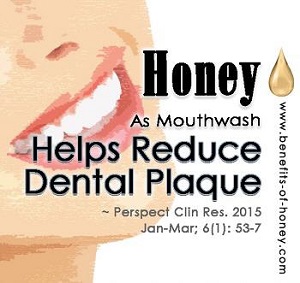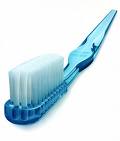gum disease remedy
Effective 1-Ingredient Gum Disease Remedy from the Bees!
Honey as Gum Disease Remedy

Does honey as a gum disease remedy sound ridiculous to you, when we are always advised to stay away from excessive sweet stuff if we want to keep our teeth strong and healthy?
Not at all if you know that honey is a good antimicrobial and is found to have an application for treating gum diseases effectively.
Proven Effectiveness of Honey in Inhibiting Plaque Bacteria
Research has shown that honey contains an enzyme that produces hydrogen peroxide which is believed to be the key reason for the antimicrobial activity of honey. Honey not only curbs dental plaque bacteria growth but also reduces the amount of acid produced, which stops the bacteria from producing dextran, a component of dental plaque that adheres stubbornly to the surface of the teeth.
A study by King Saud University, Saudi Arabia to assess the effects of chewing honey on dental plaque bacterial counts in orthodontic patients revealed the following:
“Bacterial counts were significantly reduced in the honey group compared to the other treatment groups (p0.001) and honey significantly inhibited the growth of all studied strains compared to inhibition observed with antibiotics (p0.001). Honey can be used as an alternative to traditional remedies for the prevention of dental caries and gingivitis following orthodontic treatment.” ~ The Saudi Dental Journal, Volume 26, Issue 3 , Pages 108-114, July 2014
Manuka honey has Exceptional Capability to Reduce Dental Plaque

Not all honey varieties are the same; some are more powerful in their antimicrobial properties than others and the difference can be as much as a hundred fold, as discovered by the Professors at the University of Waikato, New Zealand. Manuka honey has exceptional capability in treating gum disease. A study by researchers in India examined the effectiveness of reducing dental plaque using Manuka honey, Chlorhexidine gluconate mouthwash and chewing gum with xylitol and concluded the following:
“Both Manuka honey and chlorhexidine mouthwash reduced plaque formation significantly, better than the xylitol chewing gum.”
~ Contemporary Clinical Dentistry, 2010 Oct; 1(4): 214-7
Honey derived from the abundant Manuka bush in New Zealand, claims the strongest potency of antimicrobial properties. In addition to the usual hydrogen peroxide anti-bacterial activity, Manuka honey has Unique Manuka Factor (UMF), making it doubly potent. UMF honey is found to be more effective than hydrogen peroxide against some types of bacteria in laboratory testing and proven to be as good as the standard antiseptic phenol. The antibacterial factor in Manuka is unaffected by enzymes in the body that breaks down hydrogen peroxide components. Other types of “active honey” include Rewarewa and Wild Flora.
So, how do you use honey to treat gum disease? Scientists are exploring the option of using Manuka honey diluted as a mouthwash or even including it in toothpaste. And meanwhile, if you are game to try, just rub it into the gums after brushing your teeth!
Propolis as Gum Disease Remedy
Propolis is a sticky resinous substance collected by honeybees from the plants and trees to kill pathogens, protect their hives against rain, and seal and repair beehives. It possesses strong biological activities, such as antibacterial, antiviral, fungicidal, anti-inflammatory, and wound-healing properties that are useful for gum disease remedy.
Many research studies have concluded that propolis can be safely used to enhance the results of periodontal disease treatment and propolis-based therapies. Some clinical investigations even found that propolis acts better than standardized treatments for certain therapeutic goals such as reducing dental plaque and microbial activity and stabilizing gingival and periodontal indices (Antioxidants 2021, 10, 269).
In general and due to the positive effect of propolis chewing gum in improving gingival indices and its ability to prevent an increase in plaques, this technique can be used as an adjunctive method for improving the oral health of eligible individuals.
Acta Medica Mediterranea, 2016, 32: 1477
Pages on Related Topic
1. All about propolis: The Natural Antibiotic.
2. Propolis toothpaste helps fight bacteria, prevent tooth decay, heal bleeding gums, and prevent receding gums. Details in: Propolis Toothpaste – Nature’s Answer to Oral Diseases.
3. For propolis products such as propolis capsules and candies, check out Bee Healthy.